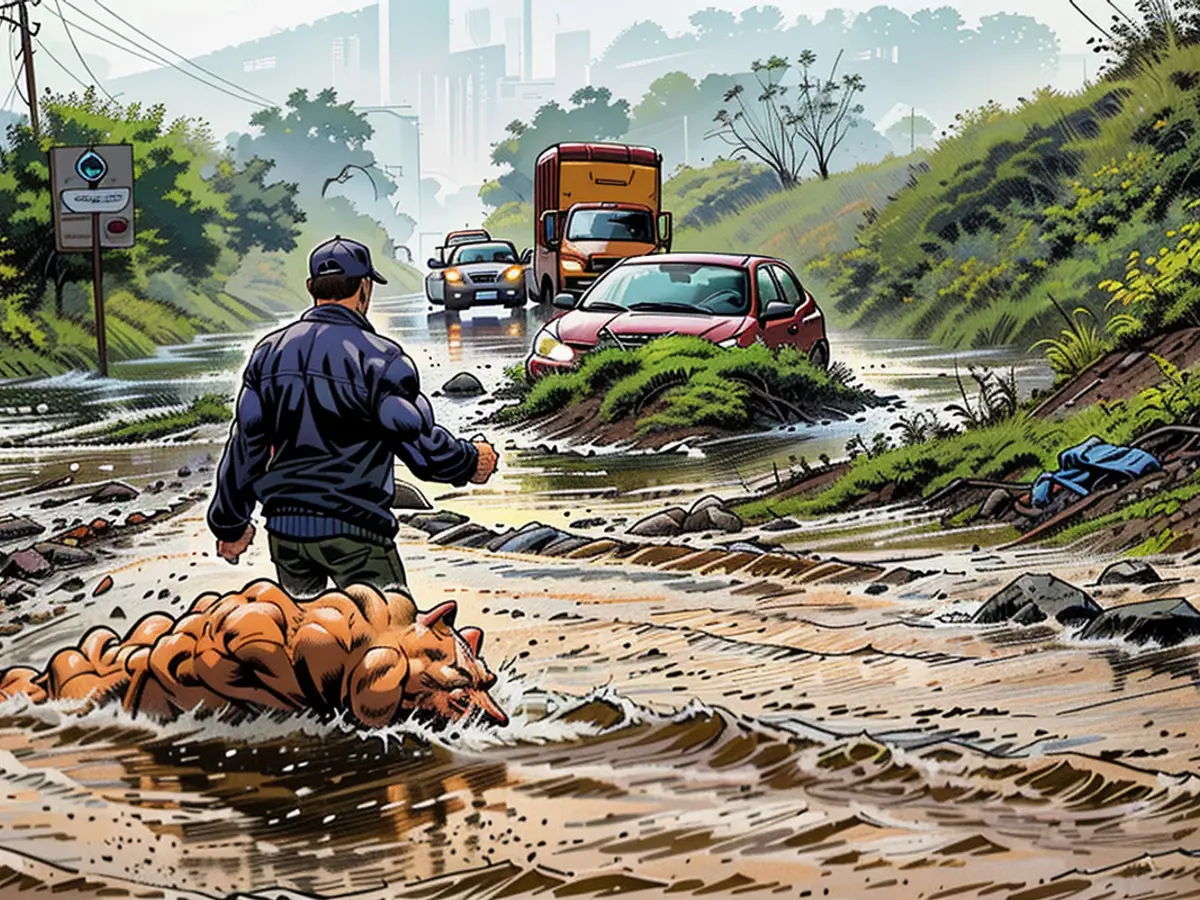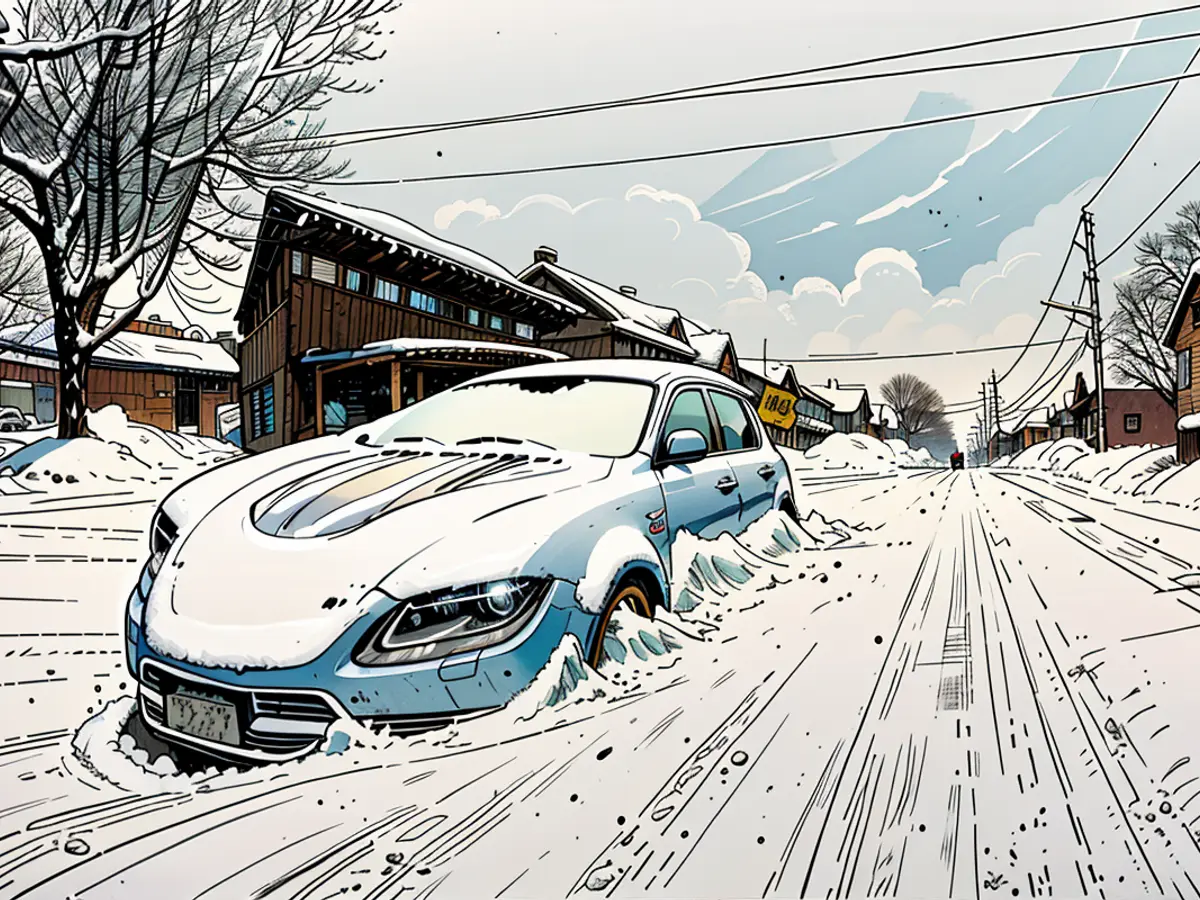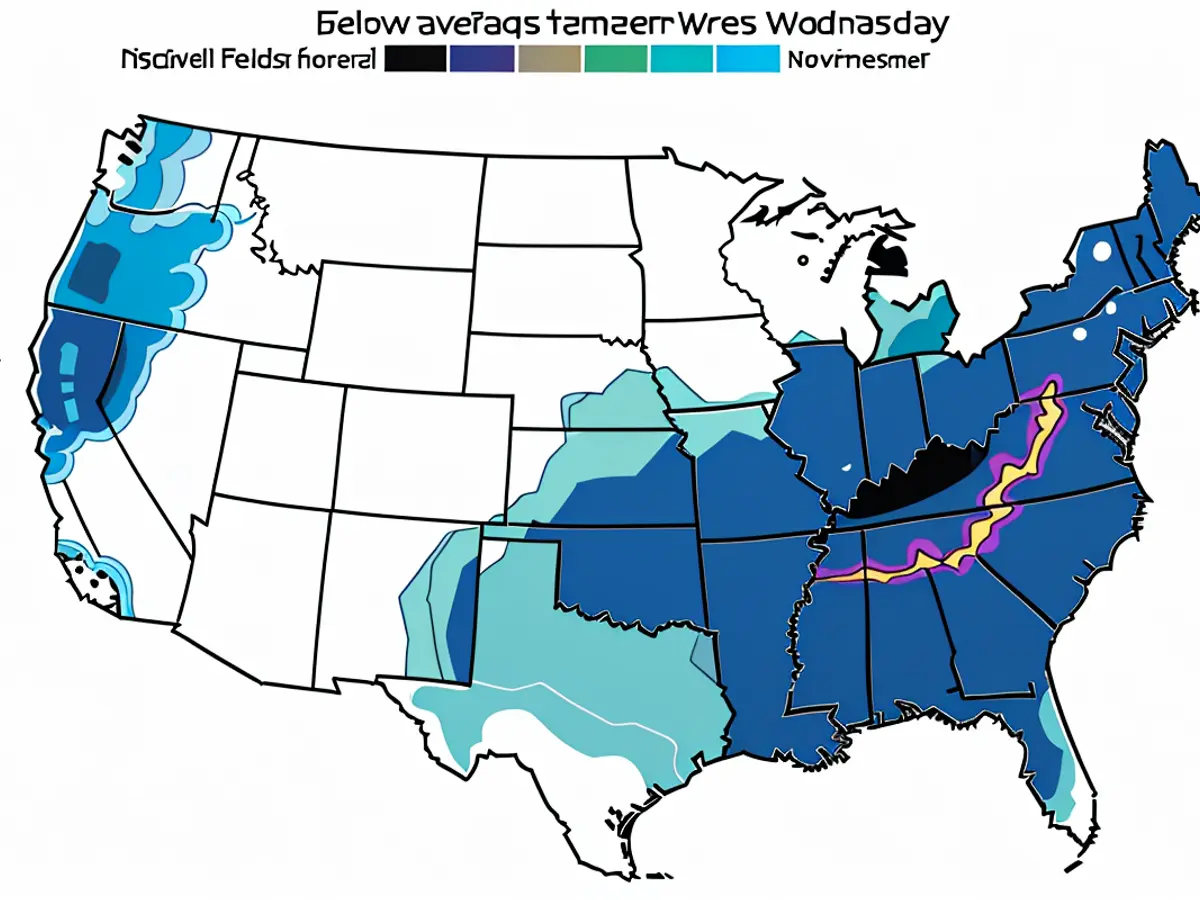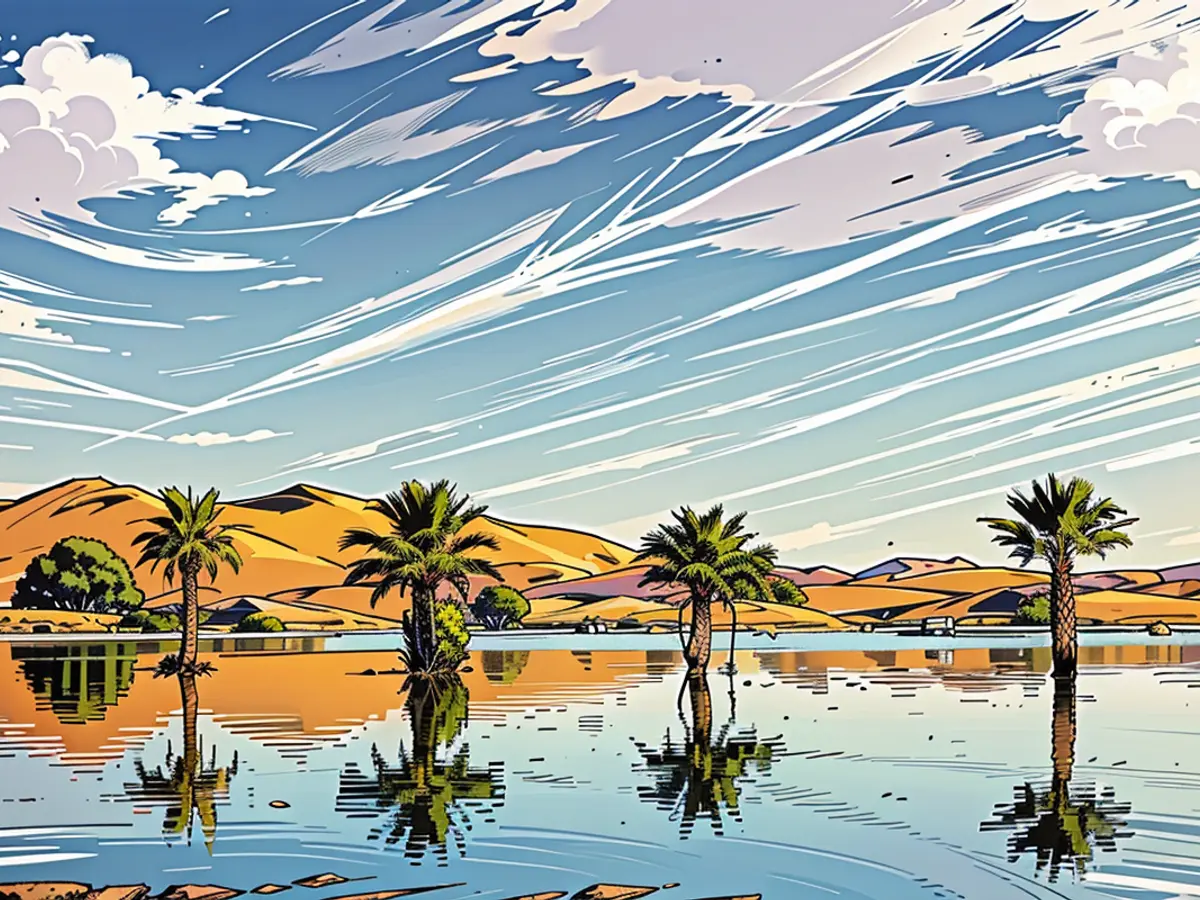Death Valley sets a new daily record with a searing 128 degrees as West Coast heat wave drags on
Widespread temperature records, including some potential all-time records, are expected to be tied or broken in the coming days. Highs in the upper 90s to 110s are expected up and down the West Coast and parts of the Great Basin.
“In the west, intense widespread dangerous heat will continue through early next week,” the National Weather Service said. “All-time heat records may be possible in a few locations.”
By Wednesday, over 250 warm high and low temperature records could be set.
Nearly 100 million people are under heat advisories in over a dozen states. And nearly 40 million people in the contiguous US are forecast to see temperatures over 100 degrees over the next seven days.
A slew of daily temperature records were broken this Fourth of July weekend. On Saturday, Death Valley reached 128 degrees, breaking the daily record of 127 set on July 6, 2007. Las Vegas reached 115 degrees, tying with records in 2007 and 1989. Kingman, Arizona, reached 109 degrees, breaking the previous record of 108.
In California, Daggett broke its daily temperature record, reaching 117 degrees. Bishop reached 108 degrees, setting another record for the state. Several record highs were also set in the Sacramento area, including in Redding, where it reached 119 degrees and beat the all-time high temperature record of 118, according to the National Weather Service in Sacramento.
Extremely dangerous heat is expected to persist in the West, with excessive heat watches, warnings and heat advisories in effect for much of the region. Heat warnings are active in California and Nevada due to the increased risk of heat-related illnesses there.
“Intense, widespread, and long duration heat building in the West will be extremely dangerous and potentially deadly if not taken seriously,” the National Weather Service said.
An excessive heat warning is in effect until late Wednesday evening for Death Valley, California, where temperatures are expected to be between 122 to 129 degrees. Elsewhere in the state, Owens Valley could reach 111 degrees, and Barstow could reach 118. In Nevada, Las Vegas and Pahrump could also reach 118 degrees.
“Hot temperatures overnight will mean little relief from the daytime heat, especially in Las Vegas and Death Valley, where low temperatures may not fall below 90 degrees for several days,” the National Weather Service said.
Death Valley – the driest national park in the US – could hit a sizzling 130 degrees by Tuesday, according to the National Weather Service in Las Vegas.
For people without adequate cooling and hydration, the multi-day nature of the heat and record warm overnight temperatures could cause heat stress to build.
Extreme heat is one of the leading weather-related killers in the United States, leaving hundreds of people dead each year, according to the weather service.
Oregon and Washington have both also seen record heat and temperatures are expected to remain in the triple digits through early next week.
“Look for more records to fall in the coming days as temperatures in the inland valleys are likely to climb near or above 100 degrees each day through Tuesday, July 9,” the National Weather Service in Portland said.
Meanwhile, heat and humidity in the Mid-Atlantic and Southeast is forecast to gradually subside into next week, lingering longest along the Gulf Coast and into the Carolinas, the weather service said. Heat index values approaching 110 degrees on Saturday in the Mid-Atlantic region will be lowered to near 100 degrees on Sunday. Heat advisories currently stretch from upstate New York down the East Coast to the Alabama coast.
In the West, the heat wave is expected to expand into the Great Basin and eventually the Northern High Plains into next week. It’s likely to remain into mid-July, according to the weather service.

Wildfire threat is fueled by unrelenting heat
Intense heat, paired with dry windy conditions, is bringing a critical risk of wildfires to parts of the upper Great Basin toward the Four Corners for the rest of the weekend. Portions of southern Idaho and southern Utah are particularly at risk.
Sweltering heat on the West coast could continue to fuel large wildfires in California. More than 3,000 wildfires across the state have burned over 150,000 acres so far in 2024, according to the California Department of Forestry and Fire Protection.
The Basin Fire, which is the largest active wildfire in the state, burned over 14,000 acres in Fresno County and was 60% contained as of Saturday evening, according to the Cal Fire.
Another large wildfire, the Lake Fire, ignited Friday afternoon in Santa Barbara County and has already scorched over 12,000 acres. The Santa Barbara Sheriff’s Office issued evacuation warnings in nearby areas and several roads were closed.
The Thompson Fire, which California Gov. Gavin Newsom had issued an emergency declaration for, was 79% contained as of Saturday night. After starting Tuesday, it has burned through nearly 4,000 acres in Butte County. Two firefighters were injured, 26 structures were destroyed and eight were damaged by the fire, according to Cal Fire.
“Dangerously hot and dry conditions were observed across the incident,” according to Cal Fire.
The French Fire in Mariposa County was 35% contained and had burned through over 900 acres after it started on the fourth of July. Due to the fire, evacuation orders and warnings were issued, four firefighters were injured and four structures were destroyed, according to Cal Fire. Meanwhile, the Mccain Fire in San Diego County had burned about 1,500 acres and was 95% contained.
The intense heat is causing numerous temperature records to be broken, with several locations potentially setting all-time highs. According to the National Weather Service, this persistent dangerous heat will continue through early next week.








